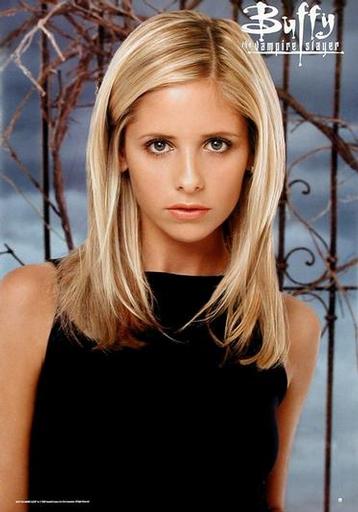Some of my favorite bands don’t exist. There, I said it, and I feel much better to get that off my chest. It can be a pretty embarrassing when you realize that a fair number of songs coming up on shuffle on your iPod were recorded by fictional characters, some of whom are actually cartoons. Note to self: take iPod off shuffle when I have company if I don’t want “Bangin’ on a Trashcan/Think Big!” from Nickelodeon’s Doug to blare loudly from my speakers.
Real or fake, I’d still pay to see these bands live:
Jesse and the Rippers
As someone who’s only slightly embarrassed to admit she bought the Uncle Jesse’s Photo Album from Scholastic book orders, it’s no surprise I was heavily into Full House’s fictional band Jesse and the Rippers. To be fair, John Stamos is actually fairly musically talented and has appeared in Broadway musicals and drumming on tour with the Beach Boys. Check out Jesse and the Rippers’ fantastically cheesy cover of the Beach Boys Forever above--it’s enough to make you jealous if you missed Stamos’s cameos on their tours.
Zack Attack/Hot Sundae
Zack Attack - Friends Forever by ray548
If Saved by the Bell was your thing, you have your pick of fictional music groups behind which to throw your fandom. Apparently the writers had a bad case of Days of Our Lives-grade amnesia and forgot that they had already used the “main characters form a band” storyline. Luckily, they managed to cover it up with some clever plot-changing details--in one case (Zack Attack) it was all just a dream, whereas in the other (Hot Sundae) we get to see Jessie’s classic caffeine pill freakout.
The Beets
With lyrics like “I need more allowance, yodel ay hee hoo!” and “Ahh eee ooooh, killer tofu!” the Beets’ catchy tunes probably made up for more of their appeal than did the content of their songs. A parody of the Beatles, Doug and the gang were forever trying to win tickets to their concerts and convincing this world-famous band to play a show at Bluffington Middle School.
The Wonders (formerly the Oneders)
They may not have been a real band, but That Thing You Do’s The Wonders had a real-life hit with “That Thing You Do!” The song made it to number 41 on the Billboard Top 100--not bad for a movie song performed by a group of actors. It is a catchy song, and of course, the guys look pretty dapper in those maroon suits.
Mystik Spiral
MTV’s Dara had a longtime crush on her best friend’s brother, the pitch-perfect 90s alt rocker Trent. As the frontman of the ever-struggling Mystik Sprial, Trent wrote some pretty deep lyrics, like in the video above:
You put me on a short leash/and threw away my hydrant! You ate up all my cable/now my coat’s no longer vibrant. My nose is dry and chapped/but this puppy’s here to stay/scratch my belly baby/every dog has its day. Awoooooooo!
LoveBurger
This band from Can’t Hardly Wait kept us in suspense, gearing up for a hyped performance but never delivering on their promise. In this case, I have to agree with the band’s frontman: you probably shouldn’t wear the shirt of the band you’re in. Though, to be fair, if he gets to wear the shirt, I’d probably want to wear the hat, too. It’s a fair exchange.
Rex Manning
The day I realized Rex Manning from Empire Records was the kid from Grease 2, it blew my mind. Who knew there could be a single actor who could play both a cool rider and a washed-up 80s pop star? Unfortunately for Rex, love can’t turn back the hands of time like it did for Grease 2’s Michael. At least in Empire Records, Maxwell Caulfield can make fun of himself as a cheesy character. In Grease 2, he was absolutely serious.
















